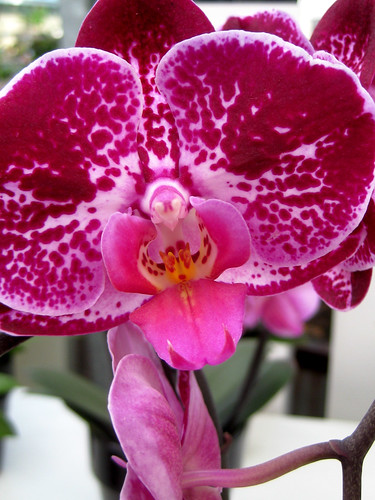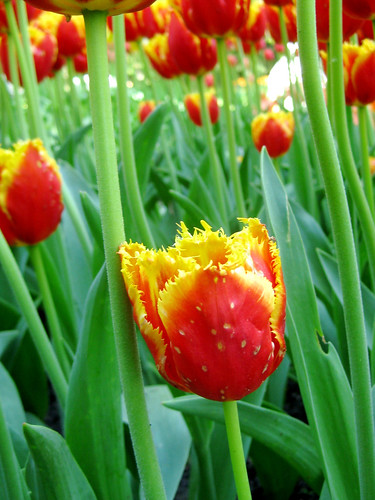
This plastic bicycle/shopping basket was designed by Marie-Louise Gustafsson, inspired by her grandmothers crochet tablecloths. Although I didn't know it until after I'd finished the inspiration boards, Shannon got one of these last summer. Besides being crochet-inspired, I like that this basket comes with a shoulder strap and can be easily put on and taken off a bicycle. This bike basket is also designed to be portable and removable and has a carry handle instead of a strap. Fabric basket liners with straps or handles can be purchased separately. The inspiration board caption for these photos is "Start with a removable bicycle basket and add crochet. Whose bicycle is this? Where are they going today?" Good, functional design has specific users in mind. You can never predict who will use the design and how, of course - and that's part of the fun, isn't it?
This bike basket is also designed to be portable and removable and has a carry handle instead of a strap. Fabric basket liners with straps or handles can be purchased separately. The inspiration board caption for these photos is "Start with a removable bicycle basket and add crochet. Whose bicycle is this? Where are they going today?" Good, functional design has specific users in mind. You can never predict who will use the design and how, of course - and that's part of the fun, isn't it?
I also asked for visually interesting - but still practical - market and produce bags, showing examples of common and basic net bags. One of the most re-pinned Pinterest pins of mine from the But What Do You Knit or Crochet in Hawai'i board is the Valley Yarns 219 Crocheted Linen Market Bag, a free pattern for a big - really big - market bag. It's plain, simple, and really roomy. It doesn't have to be so plain though - can you imagine using Jenny Hart's Chaotic Rose Cross Stitch drawing as a guide to doing a big, exaggerated cross stitch on the side of an otherwise plain market bag?*
The second half of the inspiration board is a collection of high-end designer bags that include crochet as an overlay or as the body of a bag. There's a lot of high-end crochet out there; it's not always easy to find if only because even industry people are confused or create confusion. How many times have you spotted a crocheted piece in a catalog or magazine, with a caption describing it as knit? How about macrame pieces labeled as crochet? Online, I've seen a lot of attempts to cover the bases - calling something "crochet-knit" or "crochet-macrame." Or how the fabric was created just isn't mentioned at all. Whenever I see a crochet garment with a hefty price tag, I hope whoever made it got paid a fair wage. There is no machine-made crochet - every crochet item in existence has been made by hand. When I see crocheted items priced really cheaply (like a lace cardigan crocheted with cotton thread), my heart breaks a little.
As for the challenge questions at the end of this inspiration board? What can I say, I've been watching Project Runway from the first episode of the first season, even though I kept saying I wouldn't watch the most recent two seasons.
*same reminder that all of the inspiration boards for this series has - we are not looking for imitations or replicas







